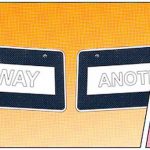I confess I never stop thinking about the interplay of the macro and micro of story. My goal is always to provide the reader with clarity and meaning.
Story development and structure arise out of and along with character development.
And the story world connects inextricably to the inner life of each story’s viewpoint character or characters.
Simply defined, the viewpoint character refers to the perspective and mind of the character through which the reader experiences the story. You might think of this character as your story’s eyes and ears and thoughts. When you use multiple characters’ viewpoints in a story, you use their perspectives one at a time, usually changing viewpoints when you begin a new scene or a new chapter. (Don’t confuse “viewpoint” with “person,” which refers to how the character will tell the story. The three options are first person (I), second person (you), and third person (s/he).
In this post I’m using three examples of a chapter opening from final edits of one of my newest novels. The Book of Riddles is a coming of age mystery told in 3rd person through two primary viewpoint characters, Detective Daniel Quist, 37, and Kady Ryder, 15.
Below are three variations on a paragraph opening a chapter early in the novel. I was working to give a strong sense of place at the same time allowing the reader access to a level of intimacy with Kady’s inner life.
My original paragraph has lively details from the world around Kady. In fact it has a few too many details—hey, this was first draft. Still, I like the sense of place.
Kady peeled out of her yard and pedaled the nine blocks at warp speed. Clocking eight minutes from her home on 41st (racing past the Ribera’s Victorian and old Mrs. Driscoll’s ivy-draped Spanish colonial, chased by Nippy, the weenie dog, evading the mess of two eggs the Diepenboch twins broke over-easy on the sidewalk to fry) cutting down tree-lined, lazy-wide M Street to the market on 48th. Driven by the adrenaline that fueled her ever since her discovery of the Daryl Lee Purse story. Just looking at his inmate picture left her queasy and she knew without a doubt that she and her family would be cracked open again by this violent stranger in the newspaper. The baking overcast sky and 98-degree-heat rising off asphalt fired her up even more, but at least the clockwork spin of her legs kept pace with her racing heartbeat.
This next paragraph is “lean and mean” and we experience Kady in action and we understand she’s driven by adrenaline that comes from something fearful and/or upsetting. (In the novel, in a previous chapter, we see her reading a newspaper story that turns her world upside down.)
Kady peeled out of her yard, peddling at warp speed, driven by the adrenaline that fueled her ever since discovering the Daryl Lee Purse story. The baking overcast sky and 98-degree heat rising off asphalt fired her up even more, but at least the clockwork spin of her legs kept pace with her racing heartbeat.
I like the energy of the lean paragraph—and I would use it if I didn’t want to give the reader a much stronger sense of Kady’s world and also how the world connects to Kady’s interior worldview, her fears, her longing, and her understanding that she feels a loss of innocence.
The following paragraphs are what I chose for the opening of this chapter because they give significant details of her world, convey energy and movement, and connect the outer world with her inner life.
Kady peeled out of her yard, peddling at warp speed toward Raley’s market, driven by the adrenaline that fueled her ever since discovering the Daryl Lee Purse story. The baking overcast sky and 98-degree heat rising off asphalt fired her up even more, but at least the clockwork spin of her legs kept pace with her racing heartbeat. Even as she flew past old Mrs. Driscoll’s ivy-draped Victorian and dodged the Ribera’s weenie dog Nipper, a part of her sought comfort in the normalcy of her neighborhood, something she and Felicity and their families and most everyone living in these stately houses used to take for granted.
She couldn’t take it for granted anymore—and she was shaking her head when she made the turn onto M Street. Was she peddling so fast in some stupid attempt to leave bad thoughts behind? Because that just made all the bad and all the wondering chase after her, coming much closer to biting her heels than Nipper could ever manage.
As her tires barely avoided the sun-fried mess of two eggs the Diepenboch twins had broken sunny-side-up on the sidewalk, she realized she ached—and it took her another minute to understand what that side stitch was about. She ached to be innocent again, waking each day to a world that promised joy and adventure without the constant shadow of life’s darkest corners, its most frightening unknowns. As if life were an old movie and the tape could be rewound. Stop it here, she’d shout—stop it before Felicity’s mom died and long before Felicity went missing.
Upcoming posts will explore more of the inevitable interplay between story’s macro and micro elements using examples from my novels and the work of other novelists. I’m someone who learns by examples. Let me know if you are, too or if you prefer other ways of adding to your skill set. I want to help you on your journey to become your best writer, which is my own goal, too—always to learn how to be a better writer.
Happy writing, Sarah
( Photo by Vlada Karpovich from Pexels)






Sarah, this is wonderful, and exactly what I am working so hard on learning right now! Are you planning on giving a workshop on this topic any time soon? Debby Rice
Hi Debby, So lovely to hear from you and so pleased this post is helpful! No workshops planned at this very moment but I’m aiming to offer an online workshop soon and will keep you posted. In the meantime,I will be posting a series of blogs on these elements of storytelling–viewpoint, perspective, voice–how they work together and how your choice serves (or might not) serve your story. What a joy that there are endless ways to share a story and even more joy when you understand your options! 🙂 Thanks so much for reaching out~Sarah
Sarah,
I am so impressed with your examples of edits of a chapter opening from your new novel ” The Book of Riddles”. I learned a great deal from your examples and clear explanations.
As you stated, your first paragraph definitely established interesting details of setting while the second rewrite honed in on the action. However, the third rewrite is the perfect blend of setting description, action and the character’s emerging emotion to help the reader sense the meaning behind it all. The final rewrite resulted in a masterful combination of details, action and character emotions that give insight into what was hidden before: the character’s (and her neighborhood’s) strong feeling of loss of security and innocence.
Thanks,
Gay Knight
Thank you so much for reaching out to share this comment, Gay. I keep learning from book to book and I’m very pleased that my examples make sense to you and that the third paragraph seems to land with you as I hoped it would.:) Warmly, Sarah